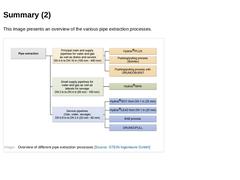
|
This image presents an overview of the various pipe extraction processes. (Image: Overview of different pipe extraction processes) |
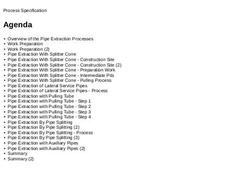
|
|
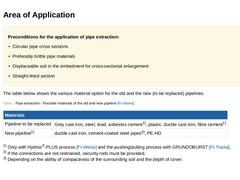
|
Preconditions for the application of pipe extraction: -
Circular pipe cross sections
-
Preferably brittle pipe materials
-
Displaceable soil in the embedment for cross-sectional enlargement
-
Straight-lined section
The table below shows the various material option for the old and the new (to be replaced) pipelines. (Table: Pipe extraction - Possible materials of the old and new pipeline [FI-Steina])
|
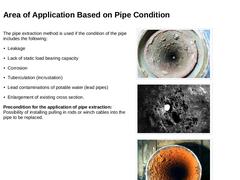
|
The pipe extraction method is used if the condition of the pipe includes the following: -
Leakage
-
Lack of static load bearing capacity
-
Corrosion
-
Tuberculation (incrustation)
-
Lead contaminations of potable water (lead pipes)
-
Enlargement of existing cross section.
Precondition for the application of pipe extraction: Possibility of installing pulling in rods or winch cables into the pipe to be replaced. (Image: Steel potable water pipe with iron and … |
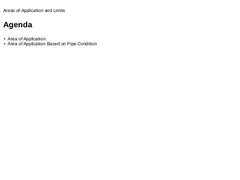
|
|
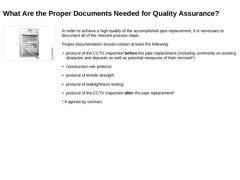
|
|
(Image: Documentation) |
In order to achieve a high quality of the accomplished pipe replacement, it is necessary to document all of the relevant process steps. Proper documentation should contain at least the following: -
protocol of the CCTV inspection before the pipe replacement (including comments on existing obstacles and deposits as well as potential measures of their removal*)
-
construction site protocol
-
protocol of tensile strength
-
protocol …
|
|
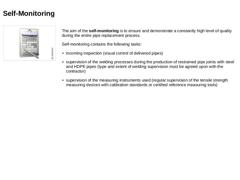
|
|
(Image: Documentation) |
The aim of the self-monitoring is to ensure and demonstrate a constantly high level of quality during the entire pipe replacement process. Self-monitoring contains the following tasks: -
incoming inspection (visual control of delivered pipes)
-
supervision of the welding processes during the production of restrained pipe joints with steel and HDPE pipes (type and extent of welding supervision must be agreed upon with the contractor)
|
|
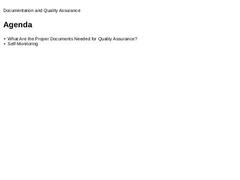
|
|
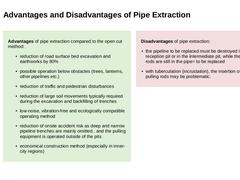
|
Advantages of pipe extraction compared to the open cut method: -
reduction of road surface bed excavation and earthworks by 80%
-
possible operation below obstacles (trees, lanterns, other pipelines etc.)
-
reduction of traffic and pedestrian disturbances
-
reduction of large soil movements typically required during the excavation and backfilling of trenches
-
low-noise, vibration-free and ecologically compatible operating method
-
reduction of onsite accident …
|

|
Congratulations! You have successfully finished this lesson. Next you will have the opportunity to review the newly acquired knowledge with an interactive questionnaire. You can of course still navigate back to any point in the lessons if you wish to review a specific point or subject. Stay curious! |
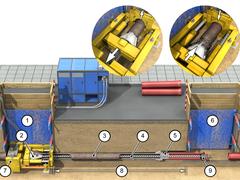
|
This module deals with the trenchless replacement of gas, water, wastewater pipelines by means of the pipe extraction method. The pipe extraction methods with split cone, pull hose, auxiliary pipe, and based on the split and cut method are presented. After completing this module, you will have knowledge of: - areas and limitations of use
- advantages and disadvantages of this replacement method.
|

|
Dec 17, 2012
News
Michael Lien
TRIC Tools, Inc., a Northern California based Pipe Bursting technology company, joined with Therma Corp., a San Jose based mechanical contracting firm, to upgrade underground utility lines at Kellogg's Eggo manufacturing plant in San Jose, CA.
|
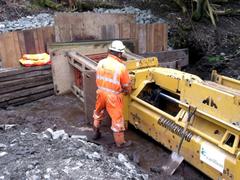
|
Feb 26, 2013
News
Groundforce
A HammerHead® HB125 static pipe-bursting system, provided by U Mole was recently utilised by rail contractor Carillion to undertake an interesting and challenging project to replace a 450mm i.d. clayware sectional culvert running beneath the main railway line between Crianlarich and Oban.
|
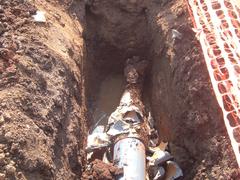
|
Jul 15, 2013
News
Patrick Haemers
In Pietermaritzburg, the capital of KwaZulu-Natal province, South Africa, city officials were faced with replacing 2,200 meters of ageing metal water pipes as part of their 10 year plan to fight leakages.
|
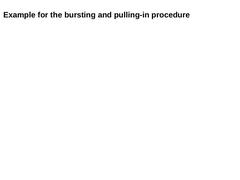
|
|
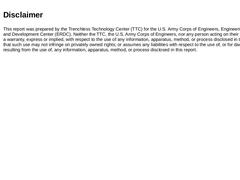
|
This report was prepared by the Trenchless Technology Center (TTC) for the U.S. Army Corps of Engineers, Engineering Research and Development Center (ERDC). Neither the TTC, the U.S. Army Corps of Engineers, nor any person acting on their behalf, makes a warranty, express or implied, with respect to the use of any information, apparatus, method, or process disclosed in this report or that such use may not infringe on privately owned rights; or assumes … |
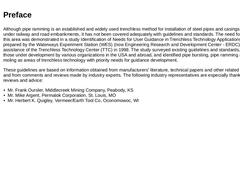
|
Although pipe ramming is an established and widely used trenchless method for installation of steel pipes and casings, especially under railway and road embankments, it has not been covered adequately with guidelines and standards. The need for guidelines in this area was demonstrated in a study Identification of Needs for User Guidance in Trenchless Technology Applications, which was prepared by the Waterways Experiment Station (WES) (now Engineering … |
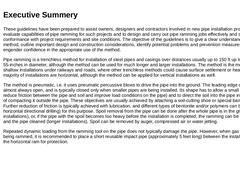
|
These guidelines have been prepared to assist owners, designers and contractors involved in new pipe installation projects to evaluate capabilities of pipe ramming for such projects and to design and carry out pipe ramming jobs effectively and safely, in conformance with project requirements and site conditions. The objective of the guidelines is to give a clear understanding of the method, outline important design and construction considerations, … |
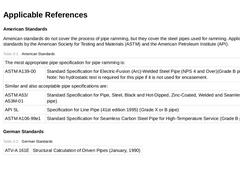
|
American Standards American standards do not cover the process of pipe ramming, but they cover the steel pipes used for ramming. Applicable are standards by the American Society for Testing and Materials (ASTM) and the American Petroleum Institute (API). (Table: American Standards) German Standards (Table: German Standards) |
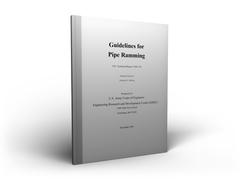
|
|

|
(Image: 105530 - Titelbild Dokumentation) Process: Static pipe bursting Title: Replacement of a vitrified clay sewer DN 12 in (300 mm) and DN 16 in (400 mm) by static pipe bursting with HDPE pipes OD 18 in (450 mm) and OD 20 in (500 mm). Location: Way of cultivation by agriculturally used areas without residential buildings Limiting conditions: -
System: Wastewater sewer
-
Material: Vitrified clay
-
Shape of the cross section: Circular cross section
-
Nominal …
|
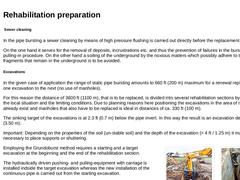
|
Sewer cleaning In the pipe bursting a sewer cleaning by means of high pressure flushing is carried out directly before the replacement. On the one hand it serves for the removal of deposits, incrustrations etc. and thus the prevention of failures in the bursting- or pulling-in procedure. On the other hand a soiling of the underground by the noxious matters which possibly adhere to the pipe fragments that remain in the underground is to be avoided. Excavations |
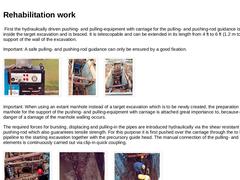
|
First the hydraulically driven pushing- and pulling-equipment with carriage for the pulling- and pushing-rod guidance is installed inside the target excavation and is braced. It is telescopable and can be extended in its length from 4 ft to 6 ft (1.2 m to 1.9 m) as a support of the wall of the excavation. Important: A safe pulling- and pushing-rod guidance can only be ensured by a good fixation. (Image: Hydraulic power pack) (Image: Hydraulic pushing- … |
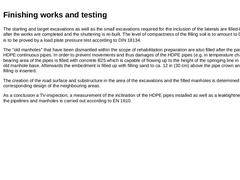
|
The starting and target excavations as well as the small excavations required for the inclusion of the laterals are filled-back directly after the works are completed and the shuttering is re-built. The level of compactness of the filling soil is to amount to Dpr = 97% and is to be proved by a load plate pressure test according to DIN 18134. The "old manholes" that have been dismantled within the scope of rehabilitation preparation are also filled … |
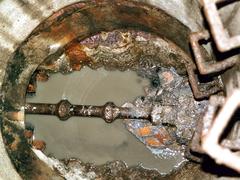
|
Replacement of a vitrified clay sewer DN 300 and DN 400 using the static pipe bursting method and insertion of PE-HD pipes DA 450 and DA 500. |